.
Sent you a copy by PM. Indeed, a must-read for your project .
Hi Stephan,Hallo Waldemar, can you name the source of the so-called Newton manuscript from the second quarter of the 17th century? The paper is often mentioned, but always without a source.
Thank you very much
Stephan
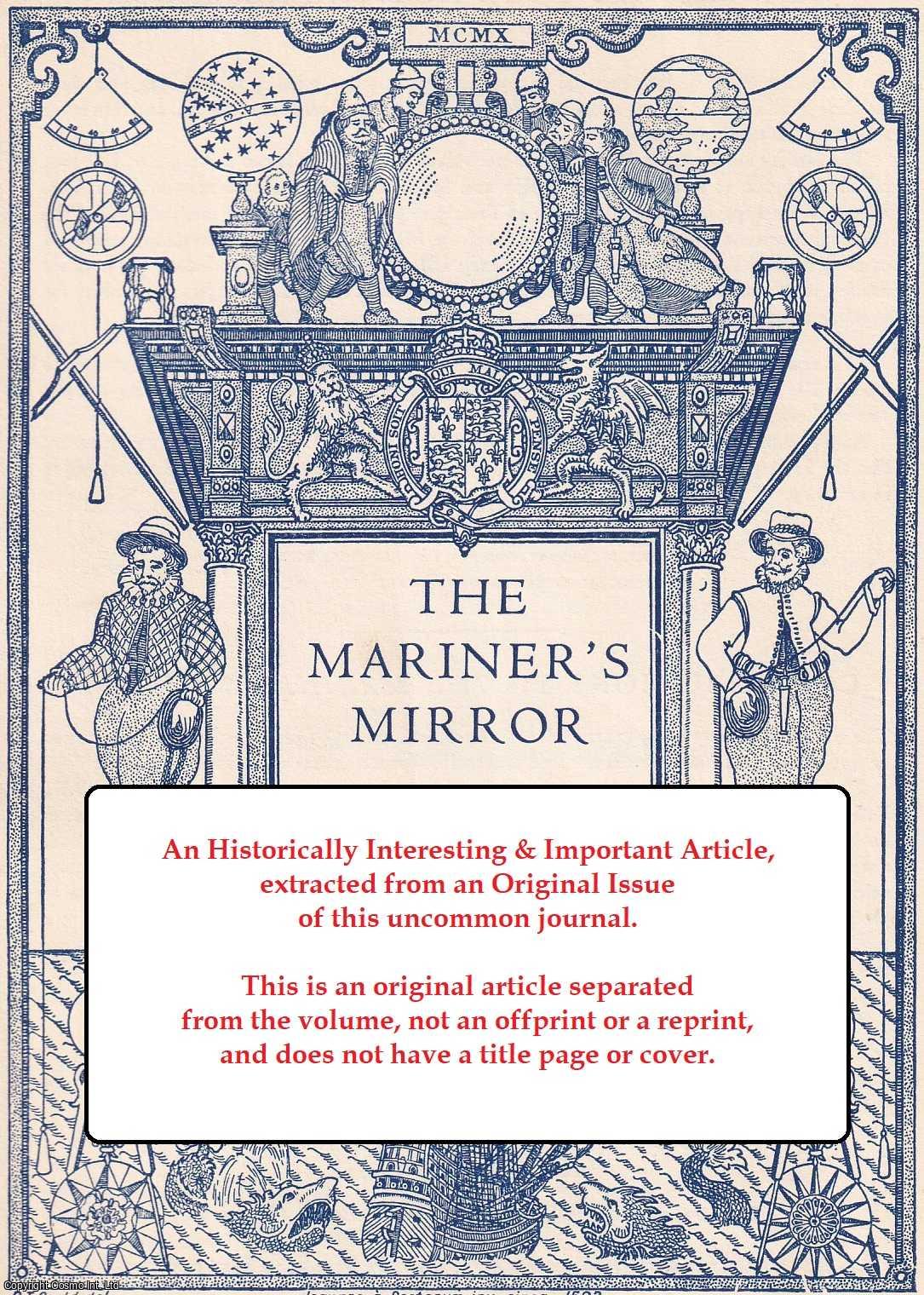
Hi Ondras,Hello Marten. I am following your interesting project, I will continue to follow. There was a discussion about this ship years ago on the Czech forum. Maybe some link will be useful for you. Fingers crossed, Ondras
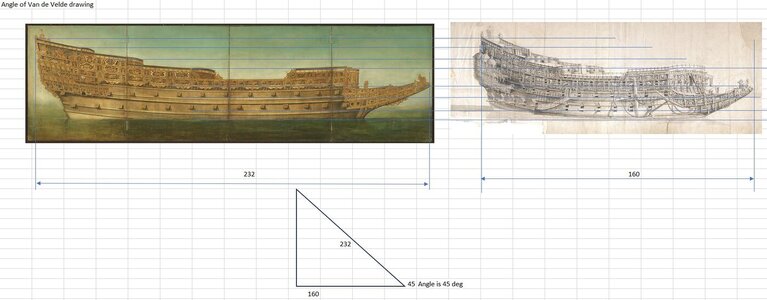
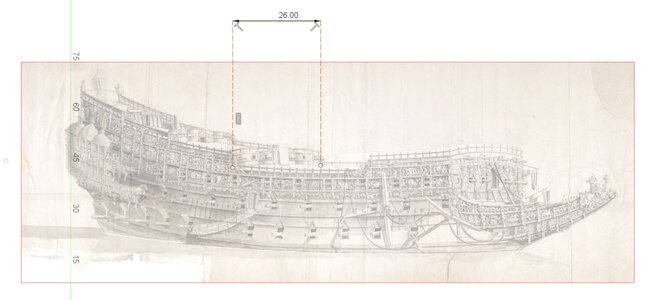
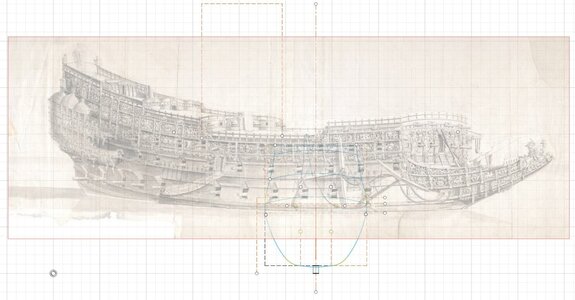
Old drawings, new 3D and basic math, you make a nice combination of them, Maarten.As we have seen in the previous post projecting the center on top the Lely painting the wider top timber / less tumble home of Dean & Bushnell seems to fit the picture better then the smaller top timber width of the 1620 treatise.
The Newton manuscript however mentions a top timber width reaching from the smaller 1620 treatise value towards the larger Dean values or between 2/3 bm to 4/5 bm for SotS this is between 31' to 37' 2".
To counter check the Lely painting wider top timber width I will compare it with the measured width in the Van de Velde Morgan drawing. However the Morgan drawing is made at an angle and I first have to determine the angle.
To do this I have scaled the morgan drawing to the Boston drawing in height reference points.
I also have put both drawings on top of each other in Fusion to scale the Van de Velde drawing to the Boston drawing.
After that I measured both drawing over the same horizontal reference points. The Boston drawing is 232 ft, the Morgan drawing +/-160 ft.
Dividing these gives nearly the square root of 2 which means the ship is drawn at a nearly 45 deg angle.
View attachment 432852
With this I can measure the width of the top timber on the main deck.
View attachment 432851
Measuring around 26' at a 45 deg angle or 1,41 x 26 = 36'9" and very close to the wider deck of the Newton manuscript and the Dean value.
It seems or Pett design had a wide top timber design which seems reasonable to make space for the upper gun decks. Petts larger frame radius above the bm also acknowledges this.
So I have redrawn the center frame using the larger Dean/Newton document top timber width, reconstructed the decks using data handed over from the navy archives and plotted the frame at a 45 deg angle on top of the Morgan drawing.
View attachment 432850
Te data seems to be very close. The decks do fit, the gun ports fit, the waterline fits, the angle of the lower gun ports is very close. It only looks the angle of the gun ports on the second gun deck are too much upright allthough the entrance port is again pretty close.
Sofar I wil go for the wider top timber/ deck space as mentioned in the Newton manuscript, in Dean and Bushnell.
Maybe I will retest a smaller radius for the top timber sweep to get a closer fit for the second gun deck port angle. Also I will make a comparison on the other Van de Velde drawings of the ship to double check the comparison, but that will be next time.
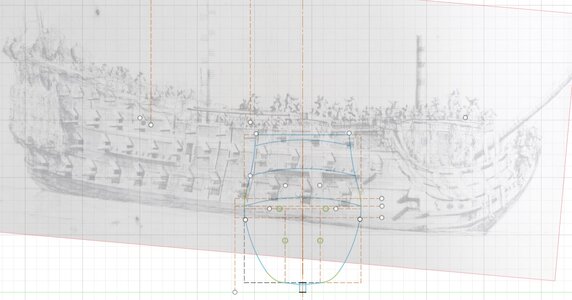
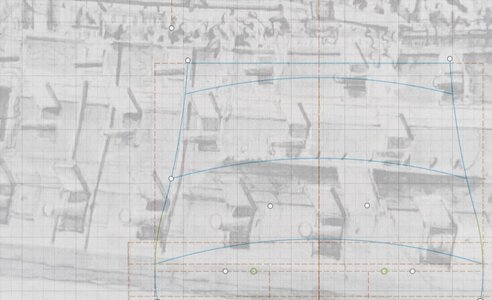
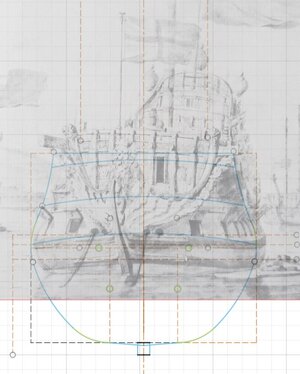
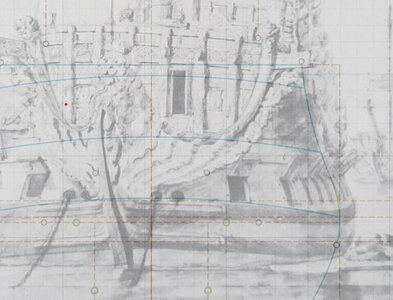
Hi Marc,This is a fascinating study in reverse-engineering, Maarten. I love all versions of the Sovereign, but the first re-build Sovereign is my favorite.
